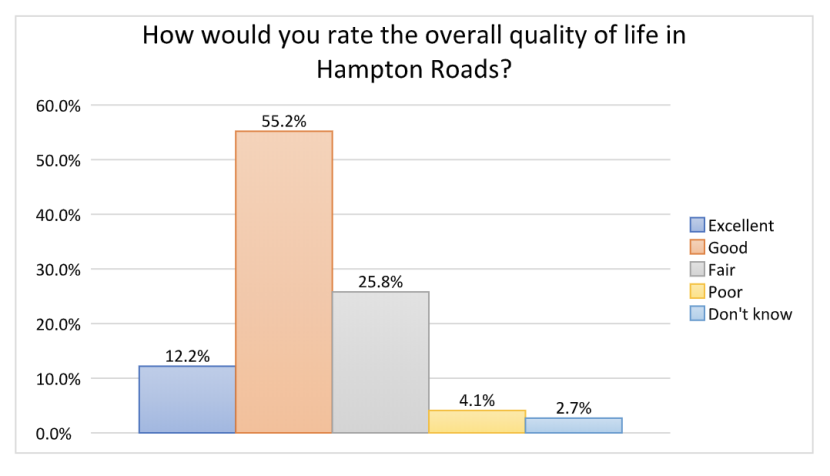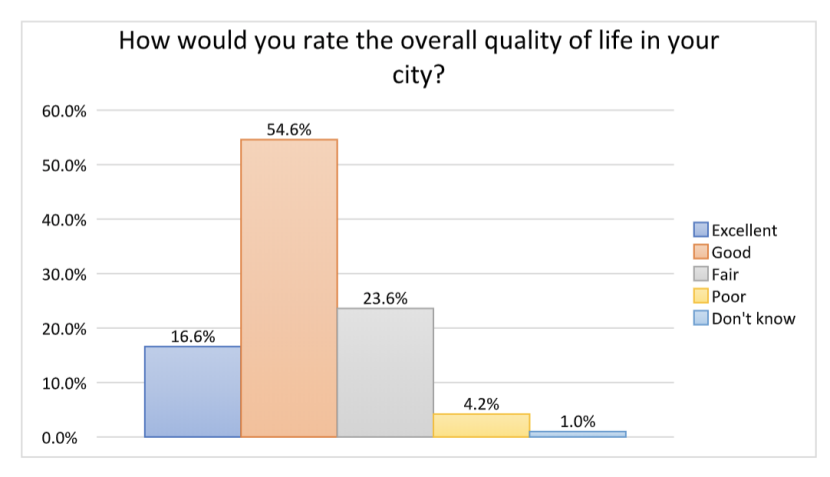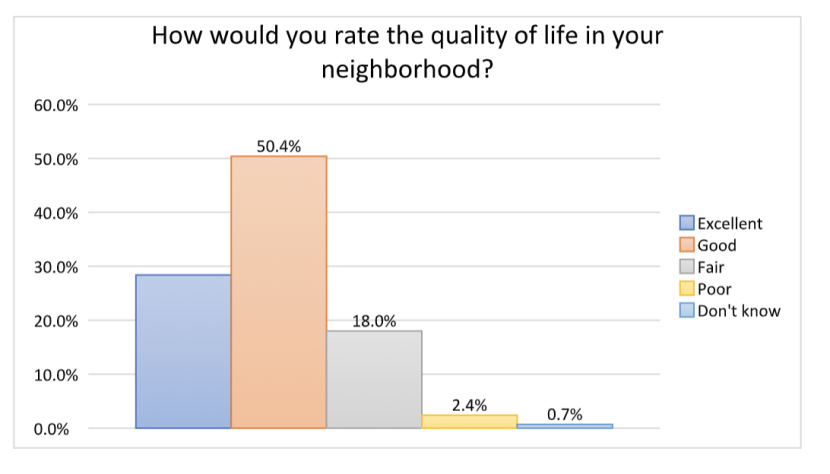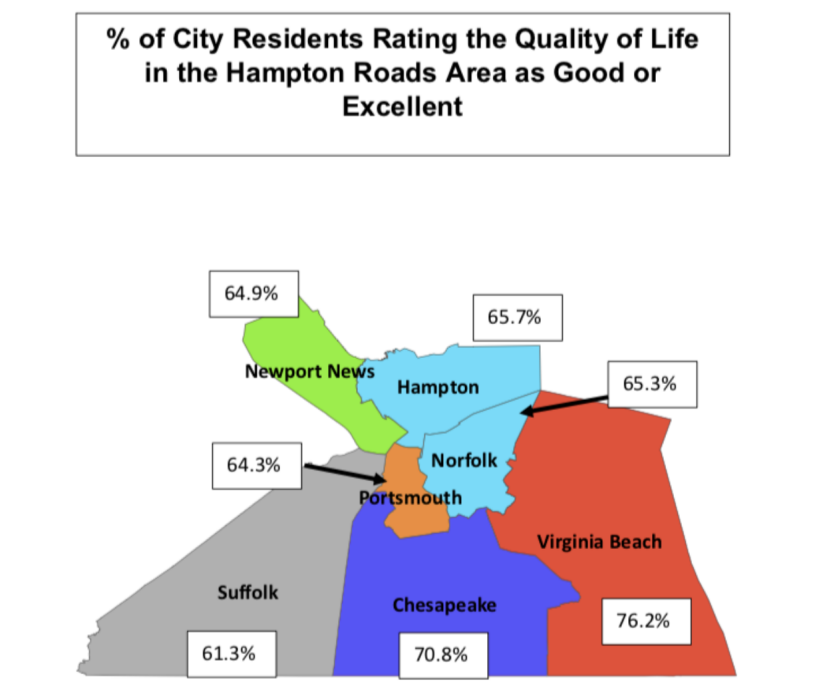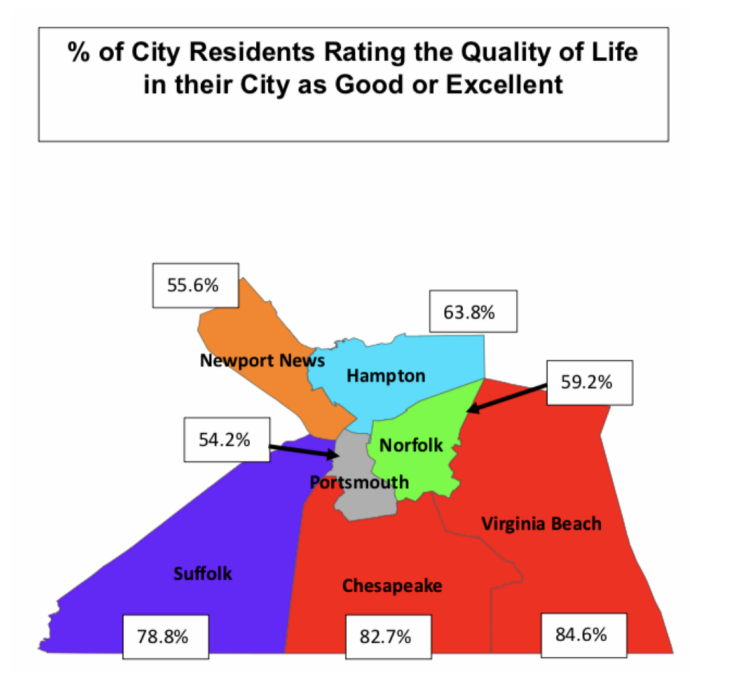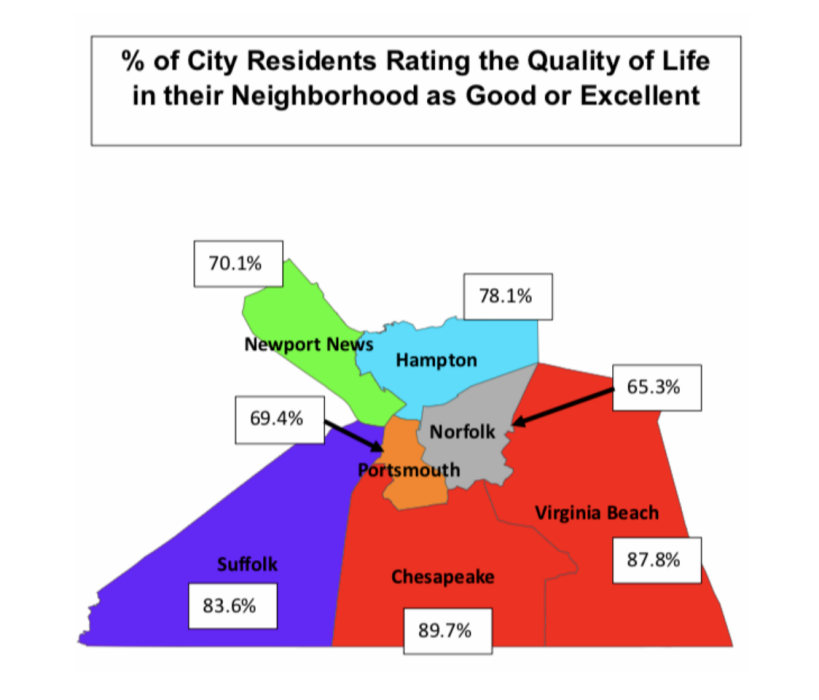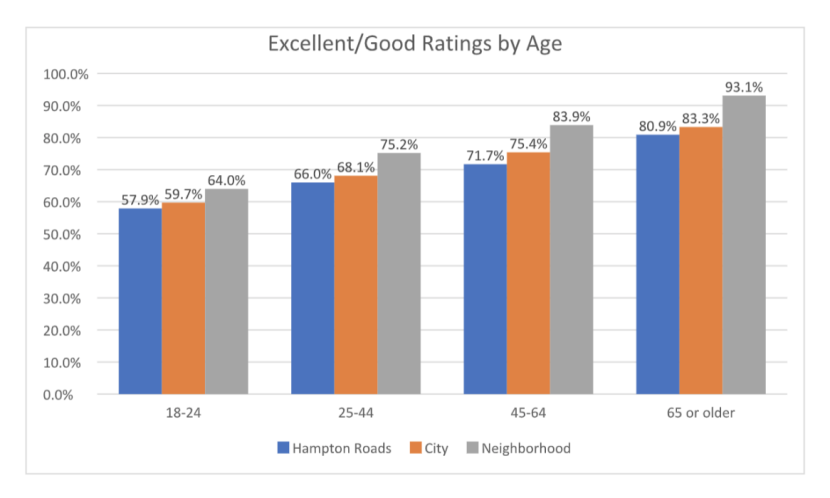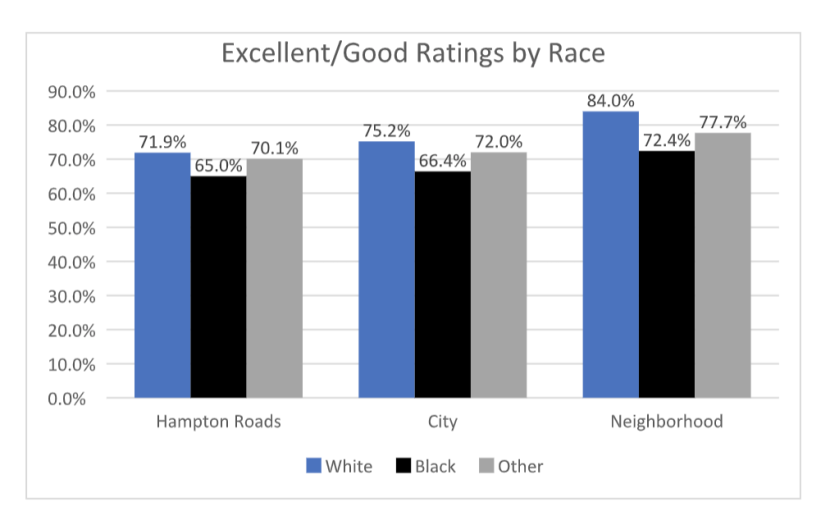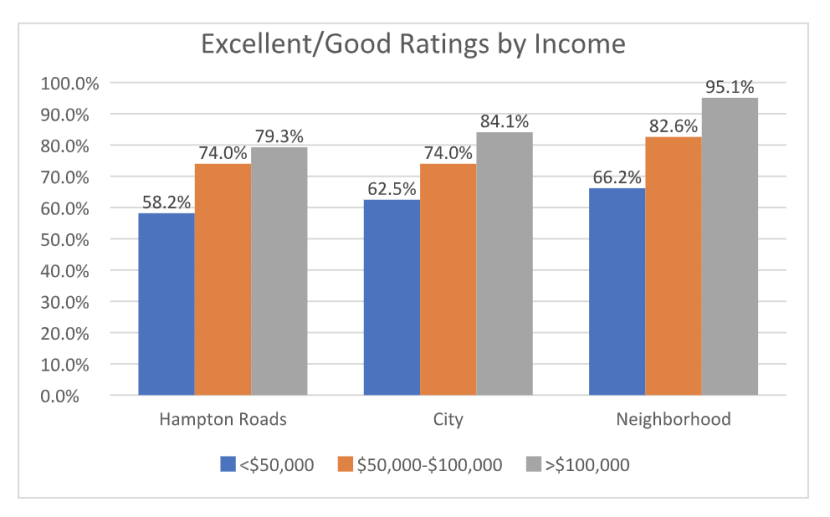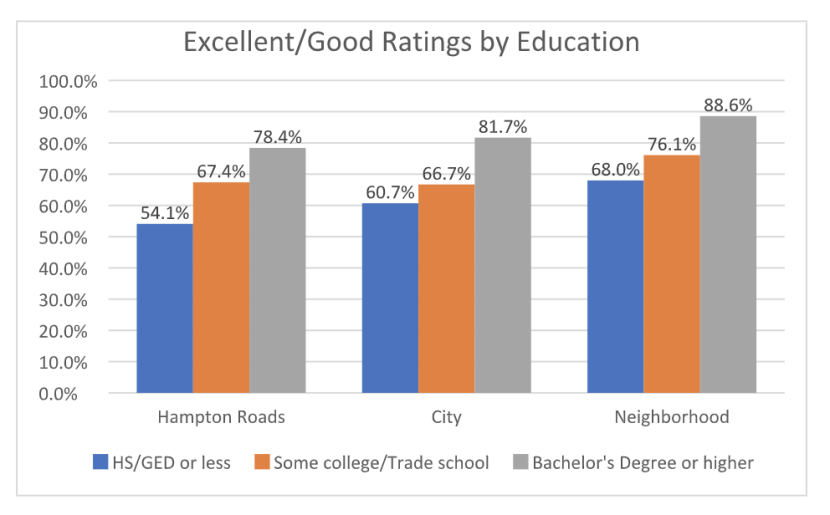The Social Science Research Center (SSRC) at Old Dominion University recently completed data collection for the 11th annual Life in Hampton Roads (LIHR) survey. The purpose of the survey is to gain insight into residents' perceptions of the quality of life in Hampton Roads and the COVID-19 pandemic, as well as other topics of local interest such as perceptions of police, employment and other issues. A total of 1,105 online surveys were completed between June 26 and July 13 (during Phase 2 and Phase 3 of Virginia's reopening plan). Of these, 1,100 were from residents of the seven Hampton Roads cities included in the Life in Hampton Roads survey and constituted the final dataset.
It is important to note that the methodology this year differs from previous Life in Hampton Roads surveys. For several reasons, including COVID-19 social distancing guidelines and telework directives, we moved from a telephone survey to a web-based design using two panels of respondents. This change limits to some degree the ability to compare this year's results with those from previous years or to as confidently generalize the results to the Hampton Roads population as a whole. Nonetheless, we note that an increasing number of surveys have moved online in recent years, and that in many instances useful data has been developed despite the challenges of online survey research. For more detailed information on the methodological changes and potential impacts please see the Methodology section in the pending full report, or please contact the SSRC directly.
Quality of Life in the Region
Despite the pandemic and stay-at-home restrictions, more than two-thirds of respondents rated the quality of life in the region as excellent or good (67.4%). About one in four rated Hampton Roads' quality of life as fair (25.8%) and 4.1% rated it as poor.
Consistent with previous years, respondents rated the quality of life in their city and their neighborhood more highly than they did for the region as a whole. Seventy-one percent rated the quality of life in their city as good or excellent and 23.6% rated their city as fair. Only 4.2% rated their city's quality of life as poor.
Neighborhood ratings of quality of life were the highest, with 78.8% rating their neighborhood as excellent or good. Only 18% rated their neighborhood quality of life as fair and a mere 2.4% rated it as poor.
Quality of Life Perceptions Vary by City
The ratings varied based on the city where respondents live. Regarding overall life in the region, residents of Virginia Beach (76.2%) and Chesapeake (70.8%) were most likely to rate the quality of life as excellent or good. Fewer than two-thirds of residents in the other cities rated regional quality of life as excellent or good.
The differences are more pronounced, however, when looking at ratings of one's neighborhood and city. More than four in five residents in Virginia Beach (84.6%) and Chesapeake (82.7%) rated their city as excellent or good compared to only about 55% in Newport News (55.6%) and Portsmouth (54.2%). More than three-quarters of Suffolk residents rated their city's quality of life as excellent or good (78.8%).
Almost 90% of Chesapeake residents rated their neighborhood quality of life as excellent or good as did 87.8% of residents in Virginia Beach. About seven in 10 residents in Newport News (70.1%) and Portsmouth (69.4%) rated the neighborhoods as excellent or good and fewer than two-thirds of Norfolk (65.3%) residents rated their neighborhood highly.
Demographic Differences
The quality of life ratings varied across certain demographic characteristics of the respondents. While there were not significant differences between males and females, the ratings of region, city and neighborhood were significantly different across age groups with higher ratings increasing with age. Those in the youngest age group (18-24) were less likely to rate the quality of life anywhere (region, city, neighborhood) as excellent or good compared to those in oldest age groups. For example, only 64% of 18- to 24-year-olds rated the quality of life in their neighborhood as excellent or good compared to 93.1% of those ages 65 and older (almost a 30% difference). Those respondents who were 65 and older rated quality of life in the region, their neighborhood, and their city higher than all other age groups.
Ratings also differed significantly by race for one's city and neighborhood. About two-thirds (66.4%) of Black respondents rated the quality of life in their city as excellent or good compared to three-quarters of whites (75.2%) and 72% of those in other racial groups. While 84% of whites rated the quality of life in their neighborhood as excellent or good, only 72.4% of Blacks did so as did 77.7% of other racial groups. And while not significant for the region as a whole, Blacks still rated the quality of life in Hampton Roads lower than whites and other racial groups.
Finally, quality of life ratings varied significantly by education and household income. The results for income show that respondents living in households making less than $50,000 per year were much less likely to rate the quality of life for the region, their city and their neighborhood as excellent or good compared to respondents living in households making more than $100,000 per year. The largest difference (about 30%) can be seen in neighborhood quality of life ratings with about two-thirds (66.2%) of respondents making less than $50,000 rating their neighborhood quality of life as excellent or good compared to 95.1% of those making more than $100,000. The results and trends for education were similar with respondents with a bachelor's degree rating quality of life higher than those with a high school education/GED or less.
*******************************
For more information, please contact:
Tancy Vandecar-Burdin, PhD
Director, the Social Science Research Center
Old Dominion University
757-683-3802
Related News Stories
Life in Hampton Roads Survey: Presidential Polling Results
The overall picture is of a president who is not very popular in Hampton Roads, and who appears to be less popular than he was four years ago with survey respondents. (More)
Life in Hampton Roads Survey: Hurricanes and COVID-19
Residents say concerns about the pandemic could alter their response to a storm, possibly putting them more at risk. (More)
Life in Hampton Roads: Politics, Policy and COVID-19 Response
Overall and on most issues the public was quite divided, with divisions often falling along party lines. But President Trump and the CDC seemed to elicit the strongest negative and positive responses, respectively. (More)




